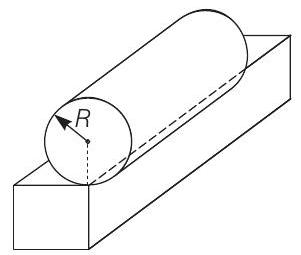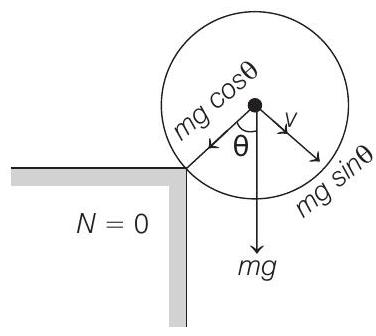Rotation 5 Question 28
40. A rectangular rigid fixed block has a long horizontal edge. A solid homogeneous cylinder of radius
(1995, 10M)

(a) the angle
(c) the ratio of the translational to rotational kinetic energies of the cylinder when its centre of mass is in horizontal line with the edge.
Show Answer
Answer:
Correct Answer: 40. (a)
(b)
(c) 6
Solution:
- (a) The cylinder rotates about the point of contact. Hence, the mechanical energy of the cylinder will be conserved i.e.

but
Therefore,
or

or
At the time of leaving contact, normal reaction
From Eqs. (i) and (ii),
or
(b)
At the time of losing contact
Therefore, speed of CM of cylinder just before losing contact is
(c) At the moment, when cylinder loses contact
Therefore, rotational kinetic energy,
Now, once the cylinder loses its contact,
Decrease in gravitational PE
or






